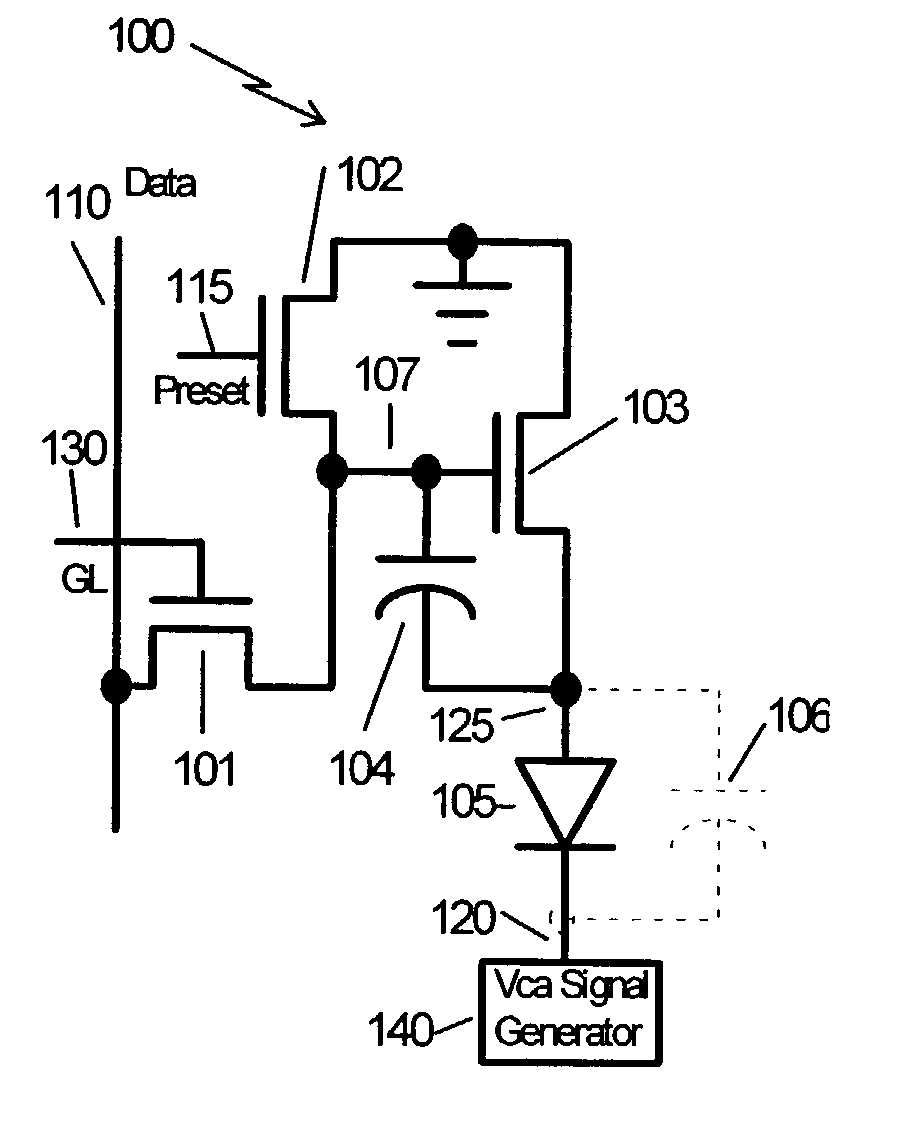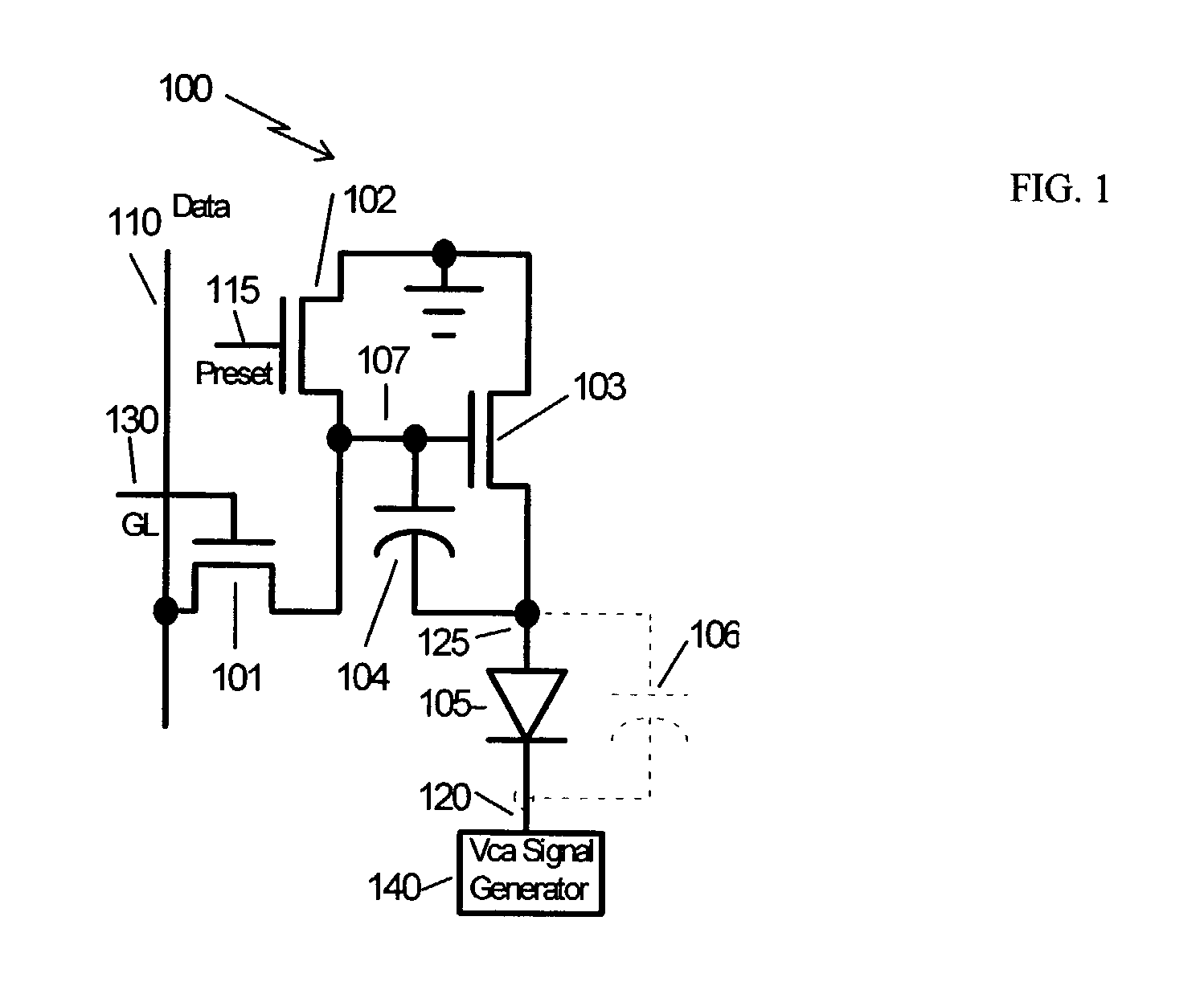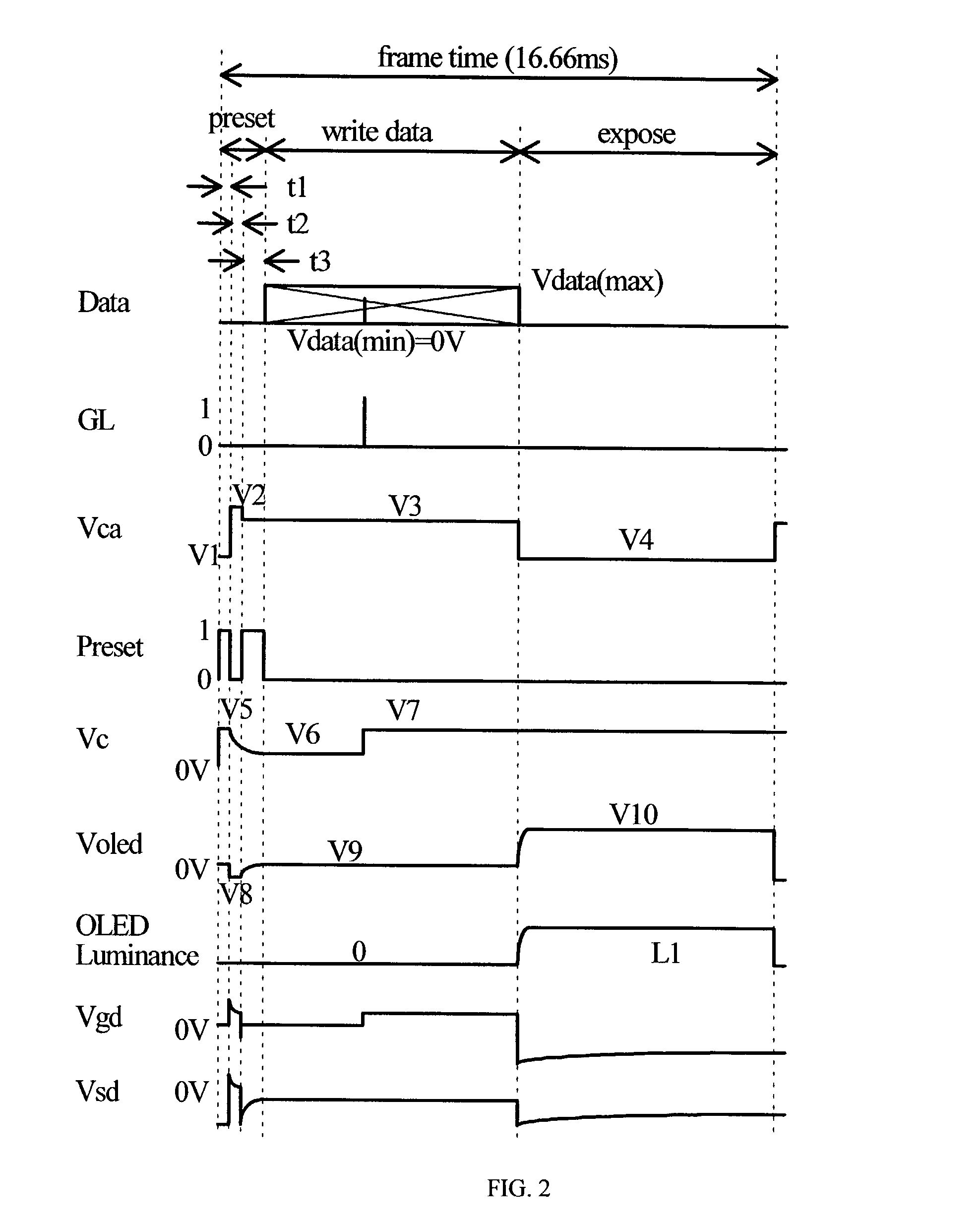Data voltage current drive amoled pixel circuit
a data voltage current and amoled technology, applied in the field of pixel circuits, can solve the problems of non-zero operating voltage of amorphous silicon, severe stress of the tft, and inability to drive the oleds with a current source comprised of nfets, etc., to minimize the stress effect of the tfts and minimize the initial tft threshold voltage shift
- Summary
- Abstract
- Description
- Claims
- Application Information
AI Technical Summary
Benefits of technology
Problems solved by technology
Method used
Image
Examples
Embodiment Construction
[0023]An embodiment of the present invention is a circuit for driving an OLED. In a frame time, there is a preset time interval, a write data time interval and an expose time interval. During the preset time interval, the circuit sets a preset voltage on a storage capacitor. The preset voltage is a threshold voltage of a current drive transistor that provides current to the OLED. During the write data time interval, data in the form of a data voltage is added to the preset voltage on the storage capacitor. During the expose time interval, the current provided by the current drive transistor is dependent only on the data voltage on the storage capacitor, and it is independent of threshold voltage of the current drive transistor.
[0024]FIG. 1 is a schematic diagram of an embodiment of circuit 100 for driving an OLED 105 in accordance with the present invention. Circuit 100 employs a method that includes providing a current to the anode of OLED 105, and applying a variable voltage signa...
PUM
 Login to View More
Login to View More Abstract
Description
Claims
Application Information
 Login to View More
Login to View More - R&D
- Intellectual Property
- Life Sciences
- Materials
- Tech Scout
- Unparalleled Data Quality
- Higher Quality Content
- 60% Fewer Hallucinations
Browse by: Latest US Patents, China's latest patents, Technical Efficacy Thesaurus, Application Domain, Technology Topic, Popular Technical Reports.
© 2025 PatSnap. All rights reserved.Legal|Privacy policy|Modern Slavery Act Transparency Statement|Sitemap|About US| Contact US: help@patsnap.com



